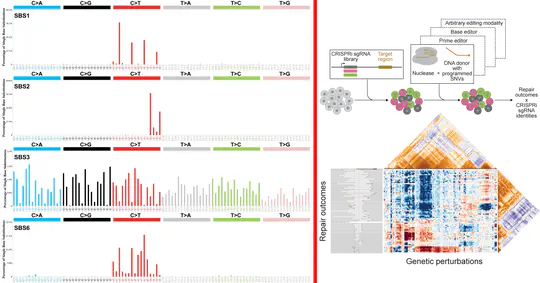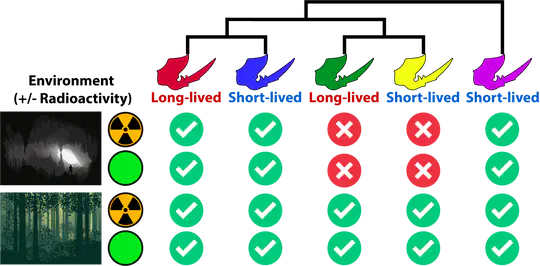Projects
With 136 species across 6 continents, the genus Myotis provides a rich source of genetic diversity for studying the connection between genotype and phenotype. While nearly all Myotis share the same 2n=44 karyotype, we see a large amount of structural diversity at the sequence level. With the advent of long-read sequencing, a Myotis pangenome provides the perfect system to study how genetic diversity at both the nucleotide and structural level shapes phenotypic diversity and adaptations to local environments.
DNA damage repair is a trait that is strongly associated with longevity across mammals; since mutations introduced by DNA damage and low-fidelity repair can cause cancer, avoiding mutations - and thus, avoiding cancer - is a requirement for a long, healthy life. In 2022, Cagan et al. directly demonstrated that lifespan is inversely related to somatic mutation frequency across terrestrial mammals - however, there were no bats in this study. As the longest-lived group of mammals, and one of the most diverse clades in terms of lifespan and other life history traits, there is an opportunity to understand how rates and patterns of somatic mutations have evolved using this group.
Before you evolve extreme longevity, you must first evolve to survive in your environment. Unsurprisingly, there are many cases in the literature where populations of humans and other species have adapted to resist local environmental toxins which mimic aging-related stresses, such as oxidative stress and DNA damage from heavy metals and radiation. In the US, there is a diversity of bat species, both long- and short-lived, whose ranges span areas with drastic differences in environmental exposures to mutagenic agents, including exposure to radioisotopes and heavy metals. This creates a natural system to study how genetic variation influences resistance to aging-associated traits: within species, one can compare the exposed populations to control populations; and between species, one can compare long- and short-lived species in different environments with matched control species that are not exposed to these local elements.


